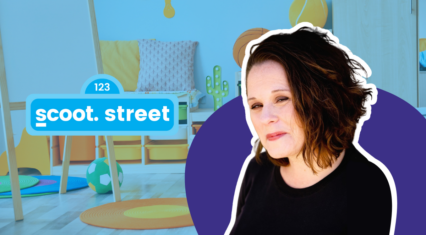Search
Get started
Log into your referral dashboard
When students are constantly in motion and easily distracted in the classroom, classroom management almost seems like a myth.
Even for experienced, certified educators, finding new and creative ways to keep students engaged can be daunting.
But the key to running an orderly, disciplined classroom is to be prepared.
Follow these classroom management tips to help you keep your students from squirming in their seats and actually working on their assignments.
Classroom management tip 1: Walk around the room
Good classroom management involves being active and engaged.
Many teachers use this simple, but effective classroom management tip to get students back on track. More will stay engaged if you’re also an engaged educator.
So don’t just sit at your desk!
Make rounds around the entire class to regularly check on students during blocks when they need to quietly work. The class is more likely to stay on task if they know you’re going to be coming around.
Walking by is also a helpful tactic to address that one disruptive student in a non-confrontational way. You can make eye contact and give a non-verbal gesture like raising your eyebrows to remind the student that they should be working on the assignment. Make sure the students you’re trying to address actually see you.
If they’re too distracted, you can quietly check in to see how far along they are in the assignment and if they need help with anything.
Maybe the students that don’t seem to be working are actually fast finishers that need something else to do! If that’s the case, it’s always handy to have extra activities in your substitute bag just in case.
The subtlety of roaming the room is a wonderful way to “control” the class without becoming the tyrant.
Classroom management tip 2: Give students roles
Substitute teachers can build rapport by entrusting students with tasks.
Kids love feeling important.
Build relationships by asking them to help in the classroom. This can involve passing out or collecting papers.
You can also ask your students to deliver a message to other teachers or take a note to the office if need be.
These tasks can act as behavior management strategies because they help students build a sense of self-worth while providing an opportunity to stretch their legs and move around.
You might find that antsy students love helping around the classroom. Even the especially disruptive student might be much more capable than you think. They’ll start feeling responsible and want to meet those expectations of being the teacher’s helper.
Classroom management tip 3: Shake it out
Common classroom management tips involve getting your students to be active.
Faithfully following the regular teacher’s lesson plan is necessary, but not always fun for the class. Most of the time, students will need to stay in their seats for the whole school day. That gets tiring very quickly.
To prevent losing the class’s attention, spend a few minutes to take a break and get everyone out of their seats. Do a few arm circles, yoga moves, jumping jacks, or share your sense of (or lack of) rhythm with dance moves in the above visual!
When you arrive early to the school, you can usually find good places within the lesson plans to have small breaks. Or you can also take a spontaneous break if you notice that too many students seem to be wondering when the bell rings.
Classroom management tip 4: Keep it short
Engaging students is easier when lessons are shorter and more digestible.
One of the most effective substitute teacher tips is to keep your lessons short. This doesn’t mean substitute teachers should be chopping up the regular teacher’s plans. That’s a huge no! But you can strategically present the plan in small amounts so students don’t feel overwhelmed.
Here are a few ways you can make the lesson plan more digestible:
- Be clear and straightforward when you provide instructions. Don’t give too many options or else that will confuse the class. For example, if you want everyone to work on an assignment. Make sure to let them know if they’re working in groups or by themselves and what to do if they finish early. Set clear expectations.
- Tell the class that they’ll be focusing on 1 task or a handful of questions. Have them quietly work and then when they’re finished, you can introduce the next section of the class.
- Follow the Pomodoro technique; 25 minutes on then 5 minutes off. This way your students feel like it isn’t all endless work and have time to rest their brains. Bonus: this also gives them time management and awareness skills.
Classroom management tip 5: Require students to review the lesson
Asking students to write down what they’ve learned is a great tool to help them remember the lesson content.
Before students rush out of the classroom for recess or lunch, ask them to write down a few things summarizing what they just learned.
Younger students can write or draw 1 interesting point about the lesson.
Older students can write 2 or 3 thoughts, ideas, or questions they have about the lesson.
Only after the mini-review sheet is completed can the student leave the class. Make sure you leave extra time for this activity so students are not leaving late.
Not only does the class get a quick refresher of what they just learned, but you can also check the papers to see whether students absorbed the content.
You can leave those notes in the classroom for the regular teacher so they know how much of the lesson plans you were able to cover while substitute teaching. You might get extra brownie points with the school for being detailed.
Classroom management tip 6: Encourage students to present
The class is more likely to stay focused when they might have to present.
Divide the classroom into small groups and have them briefly talk about the main points of what they just learned.
Students can listen to what their peers learned and they’ll be able to ask each other questions that they were too shy to ask the teacher.
After discussing for about 5 to 10 minutes, ask each small group to give one contribution. The group would nominate a “spokesperson” to speak up for the group.
The spokesperson can either share their own insight or one of their peer’s insights.
To keep things casual and less stressful, allow kids to present while sitting down.
There will be classes that find presenting way more challenging than it is fun, so be ready to give a lot of positive encouragement for students to use their voices!
We hope these classroom management tips help you to keep your class focused. No matter which you choose to use, remember to act confident. It’s no secret that many kids think a substitute teacher day means a free day to do nothing.
Whether you’re subbing for younger students or older students, utilize your authority as the adult in the room and you’ll be dealing with fewer behavior problems.
Need more tips for substitute teachers like how to introduce yourself or what to do when class is over? Check out our other blogs:
Ready to become a substitute teacher?
Becoming a substitute teacher is simple. Especially with an educational staffing company like Scoot Education. We want to support you throughout your application process and beyond.
Subbing with Scoot means access to more opportunities, more school districts, and more excitement!









![How to write a strong substitute note [+free template!]](https://scoot.education/wp-content/uploads/2022/05/thank-you-426x235.png)


